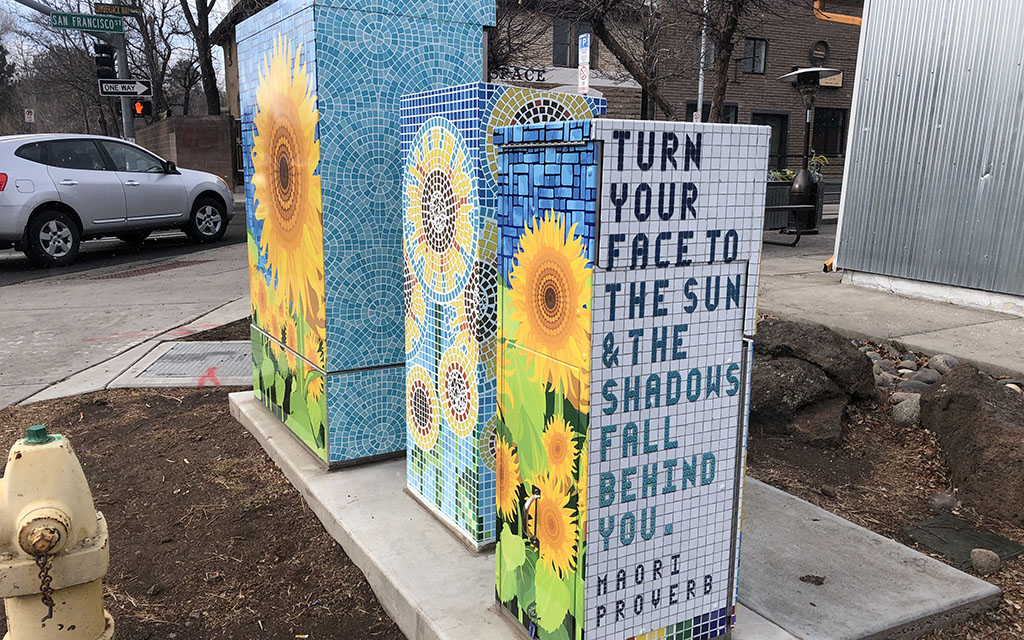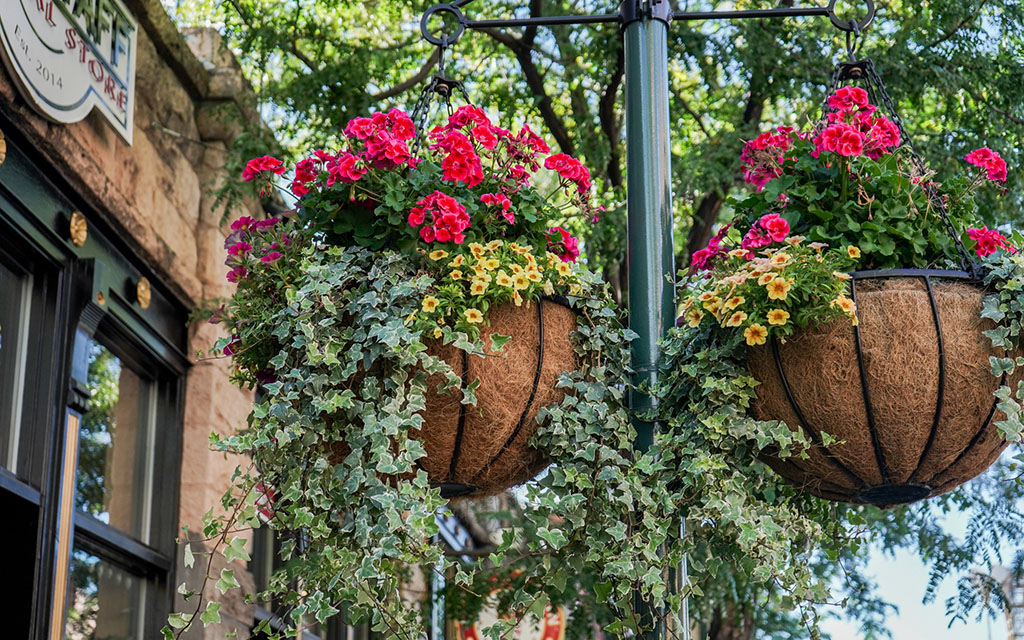FLAGSTAFF – Arizona’s arts and culture sector generated $1.1 billion in statewide economic activity in 2022, according to the Arizona Commission on the Arts.
Over 11,000 employees are employed by statewide nonprofit arts and culture organizations, contributing to $15.4 million in tax revenues, the commission said, citing an Americans for the Arts survey.
An example of arts and culture initiatives in Arizona can be seen on the streets of Flagstaff. The city is devoting thousands of tax dollars to several programs to beautify its urban environments, according to city documents.
The Beautification in Action program, which started in 2010, uses local tax dollars to fund grants approved by the city’s Beautification & Public Art Commission. The grants pay for the creation and installation of public art, landscapes, gateways, streetscapes and other tools intended to enhance community aesthetics and make the environment greener.
Approved in twice-yearly cycles, the grants are funded by Bed, Board and Beverage (BBB) taxes, money generated by local hotels, bars and restaurants. The city uses portions of the revenue to give grants of up to $4,500 to local artists, businesses, community groups, nonprofit organizations and educational institutions to implement beautification projects.

Artist Jill Sands in front of her wrapped utility cabinet. (Photo courtesy city of Flagstaff)
The city awarded grants to five applicants this spring and hopes to double the number of grants in the fall, according to Cristen Crujido, the city’s beautification, arts and sciences coordinator.
The city encourages projects that can help build neighborhood relationships, inspire playfulness, and instill community pride, according to city materials.
“Beautification focuses on aesthetic enhancements of public space,” said Jana Weldon, the beautification, arts and sciences program manager, in an email. “Beautification enlivens the city.”
A colorful clock was built downtown to take the place of a historic clock, San Francisco Peaks art was installed near the Babbitt Building and 22 flower baskets have been hung in downtown spaces. New signage printed with “Route 66” logos has been dispersed throughout town, reminding visitors of the historic highway that once spanned much of the country. Route 66 runs right through downtown Flagstaff.
“Art is really transformative,” Crujido said. “It can bring communities together. It can strengthen a community’s identity.”
Wrapping utility boxes for public art
The Traffic Signal Cabinet program, which began in 2020, is a grant program approved by the city’s Beautification & Public Art Commission.
The project gave grants of up to $2,200 to artists, illustrators and graphic designers to design art that could be wrapped around traffic signal cabinets.
“I really like the cabinet wraps because it’s something that we need,” said J. Michael Cruz, chair of the Beautification & Public Art Commission. “Why not beautify them and put something really cool on them?”
The city sent a call out in January for wrap art ideas. The program was open to primarily local artists. A total of 73 proposals were submitted for five utility cabinets.
Project locations were based on safety, city ownership and good pedestrian, bike or car visibility, according to Weldon.
Wraps for the utility cabinets at S. Foxglenn Street and Butler Avenue, designed by artist Joel Geist, feature gold and yellow rays peeking out from behind a mountain range.

“A Fox” traffic cabinet art wrap by Joel Geist. (Photo courtesy city of Flagstaff)
Utility cabinets at S. Beulah and McConnell Drive now have a turquoise-blue wrap with colorful flowers and butterflies, while those at S. Beulah and Forest Meadows feature an antelope in front of a red sun. The wraps for both locations were designed by artist Sean Tierney.
“I think that makes Flagstaff that much richer if we have local artists who are … doing something for us,” Cruz said. “I think it’s good for the city’s economy. I think it’s good for tourism. I think it’s money well-spent.”
“What artists bring … is diversity, in terms of the design, diversity, (and) in terms of who they are,” Cruz said, referring to artists’ race, ethnicity, gender and sexuality. “We live here, we pay taxes, we have to drive by a utility cabinet every day. We appreciate that it’s wrapped.”
Other Arizona cities also carry out art implementation programs. Similar to Flagstaff’s Traffic Signal Cabinet program, the city of Maricopa in March sent out a call for artists to design utility box art as part of the Traffic Signal Box Art Program. The city of Chandler’s Neighborhood Enhancement Assistance Program lets homeowners apply for funding to replace landscaping, entryway signs, fencing, walkways and fountains on their homes.
Crujido said art programs bring numerous “intrinsic benefits,” such as opening employment opportunities, attracting residents and visitors, and offering a space for emerging and established artists to promote their work.
“The possibilities are endless,” Crujido said.
“Public art gives cities and neighborhoods distinct character and a sense of place,” Weldon wrote. “It encourages communication, promotes neighborhood identity and creates urban exclamation points for visitors and residents alike.”




